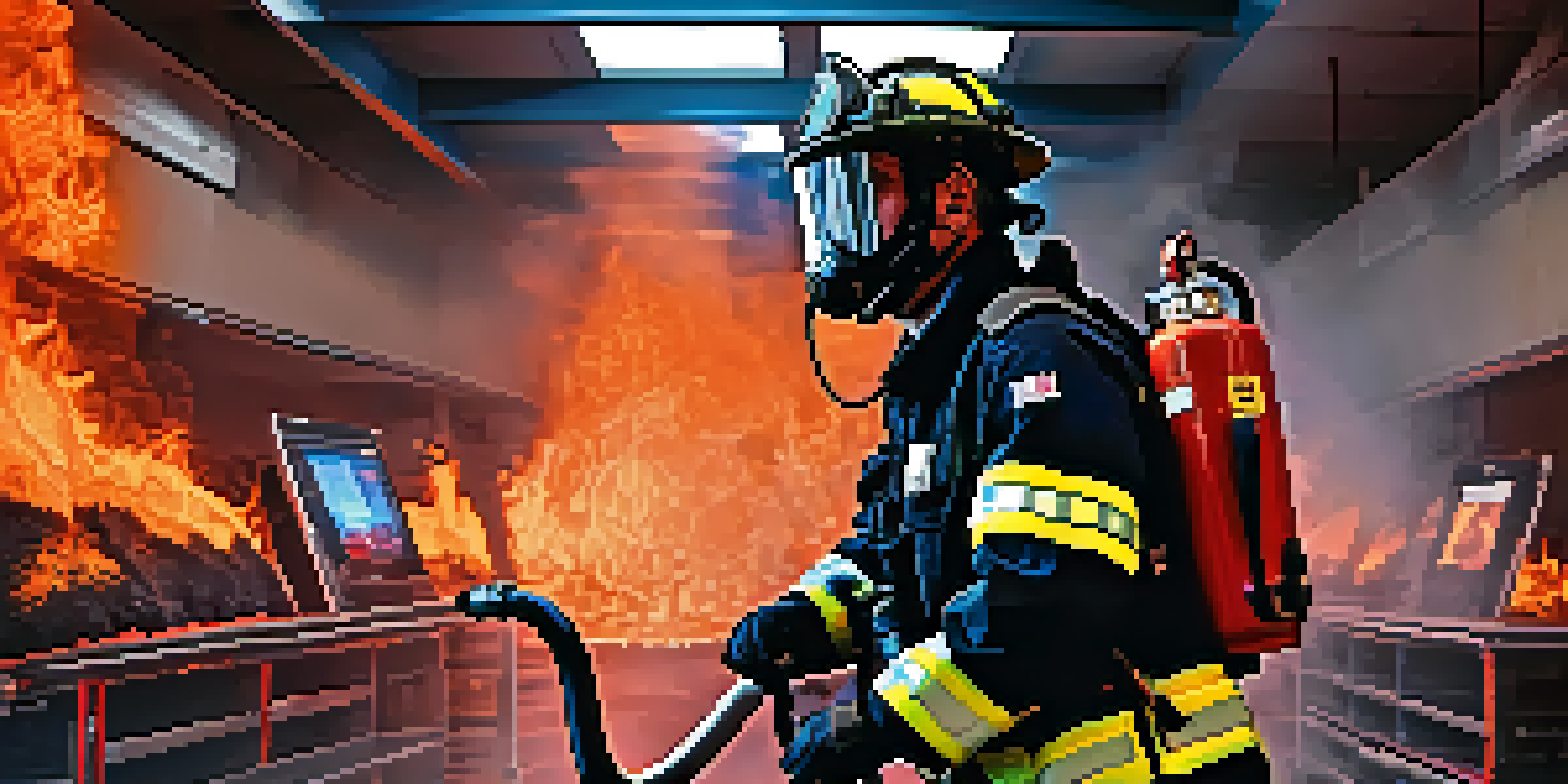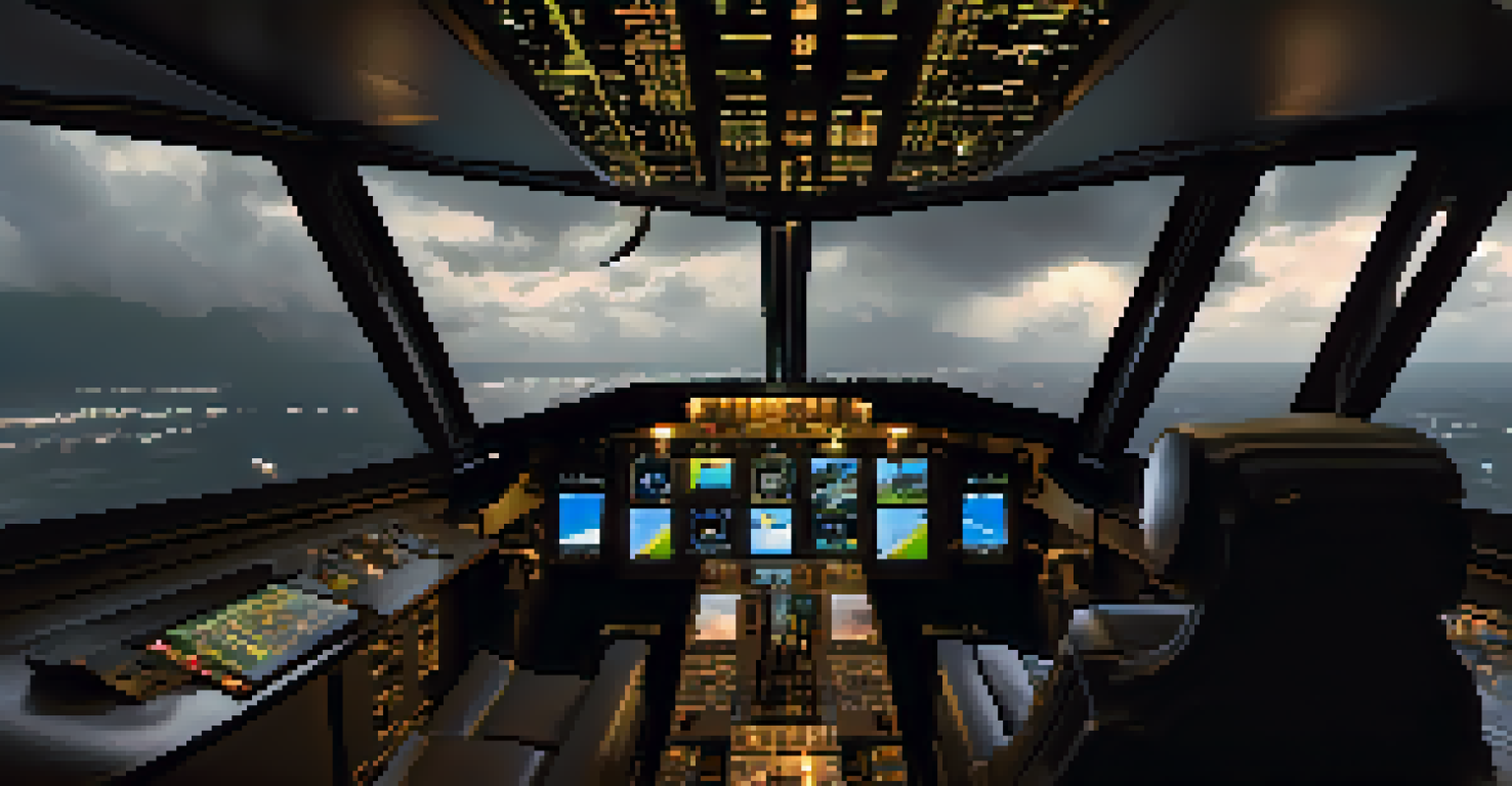Simulating High-Stakes Situations with VR in Training Programs

The Power of Virtual Reality in Training Programs
Virtual Reality (VR) is revolutionizing training programs by providing immersive experiences that traditional methods simply can't match. Imagine stepping into a simulation where you can practice your skills in a safe environment, making mistakes without real-world consequences. This technology enables learners to engage with scenarios that would be too risky or expensive to recreate in reality, from emergency response to surgical procedures.
Virtual reality is the most powerful technology for changing our lives since the Internet.
By immersing trainees in realistic settings, VR helps to enhance their decision-making skills and prepares them for high-stress situations. For instance, firefighters can experience a controlled fire environment, helping them to learn how to react effectively under pressure. This hands-on approach fosters deeper understanding and retention of critical skills, as opposed to passive learning methods like lectures or videos.
Moreover, the adaptability of VR training means it can be customized to meet the unique needs of different industries. Whether it’s for healthcare, aviation, or military training, VR can simulate a wide array of high-stakes situations, ensuring that learners are well-prepared for anything they might face in the real world.
Real-World Applications of VR Training
Various industries are leveraging VR to train employees effectively. For example, in healthcare, medical students can perform virtual surgeries, honing their skills before they ever touch a real patient. This not only builds their confidence but also minimizes the risk of mistakes in actual surgeries, ultimately improving patient safety.

In aviation, pilots use VR simulators to navigate complex scenarios, such as engine failures or inclement weather, without ever leaving the ground. These simulations allow them to practice emergency procedures repeatedly, ensuring they’re well-prepared for real-life challenges. The immersive experience helps pilots retain critical information and improves their ability to react swiftly under pressure.
VR Enhances Training Effectiveness
Virtual Reality provides immersive training experiences that improve skill retention and decision-making in high-pressure situations.
Similarly, the military employs VR training for soldiers to experience combat situations in a controlled environment. This prepares them for the unpredictability of real combat, enhancing their tactical skills and teamwork. By simulating various scenarios, soldiers can develop their response strategies while also building camaraderie with their peers.
Benefits of Simulating High-Stakes Situations
One of the most significant benefits of simulating high-stakes situations with VR is the ability to experience realistic scenarios without real-world risks. This kind of training allows individuals to make and learn from mistakes, fostering a deeper level of understanding. For example, a new firefighter facing a virtual inferno can learn the best techniques for extinguishing flames without the danger of actual fire.
The future of training is not just about learning; it's about experiencing.
Additionally, VR training enhances emotional preparedness. Trainees can experience the stress and pressure of high-stakes situations, which is crucial for developing resilience. This emotional engagement helps individuals to better manage their responses when faced with similar challenges in real life, leading to improved performance in critical moments.
Moreover, the repetitive nature of VR training allows for mastery of skills. As trainees can revisit scenarios as often as needed, they can continually refine their techniques and strategies. This repetitive practice solidifies learning and builds muscle memory, which is essential for performing under pressure.
Challenges in Implementing VR Training Programs
While VR training offers numerous benefits, there are challenges in its implementation. One significant hurdle is the cost of developing and maintaining VR programs. High-quality VR content requires investment in both technology and expertise, which can be a barrier for some organizations. However, as technology advances and becomes more accessible, these costs are expected to decrease.
Another challenge is ensuring that the training is effective and meets the needs of diverse learner populations. Not everyone responds to VR in the same way, and some may experience discomfort or disorientation. Therefore, it’s crucial to design VR training programs that include options for different learning styles and preferences, ensuring inclusivity.
Real-World Applications of VR
Industries like healthcare, aviation, and military are successfully using VR to simulate high-stakes scenarios for effective employee training.
Finally, integrating VR into existing training curricula can be complex. Organizations must find ways to blend traditional training methods with VR experiences effectively. This requires careful planning and evaluation to ensure that the VR component enhances learning rather than complicating it.
The Future of VR in Training Programs
As VR technology continues to evolve, its applications in training programs are expanding rapidly. Innovations in haptic feedback and artificial intelligence are making simulations even more realistic and engaging. This will allow trainees to experience not just the visual and auditory aspects of situations but also the tactile sensations, further enhancing learning outcomes.
Additionally, the integration of VR with other technologies, such as augmented reality (AR), could create hybrid training experiences. Imagine a scenario where trainees can see digital overlays in their real-world environment while still engaging with VR elements. This convergence of technologies could lead to even more effective training solutions that cater to a variety of industries.
Ultimately, as organizations recognize the value of VR in preparing employees for high-stakes situations, we can expect to see broader adoption across various sectors. The future of training is likely to be more immersive, interactive, and impactful, providing learners with the tools they need to excel in challenging environments.
Measuring the Effectiveness of VR Training
To ensure that VR training programs are effective, organizations need to establish clear metrics for success. This can include evaluating the performance of trainees before and after VR training sessions. Understanding how well individuals can apply their skills in real-world scenarios is crucial for assessing the impact of the training.
Feedback from trainees is also an essential component of measuring effectiveness. Gathering insights on their experiences with VR training can help organizations refine and improve the programs. This iterative process ensures that the training remains relevant and engaging while meeting the evolving needs of learners.
Importance of Feedback in VR
Immediate and post-training feedback is essential for refining VR programs, enhancing the overall learning experience, and fostering continuous improvement.
Furthermore, tracking long-term retention of skills and knowledge is vital. Organizations should analyze how well trainees perform in their roles months after completing VR training. This data can provide valuable insights into the lasting impact of the training and inform future program developments.
The Role of Feedback in VR Training Success
Feedback plays a crucial role in the success of VR training programs. Immediate feedback during simulations helps trainees understand their mistakes in real time, allowing them to adjust their approaches on the spot. This instant reinforcement is key to building confidence and competence in high-pressure situations.
Additionally, post-training evaluations can provide valuable insights into the overall experience. By encouraging trainees to share their thoughts on what worked and what didn’t, organizations can continuously enhance their VR training programs. This feedback loop fosters a culture of improvement and adaptability, ensuring that training remains effective and relevant.

Moreover, creating opportunities for peer-to-peer feedback during VR training can enhance the learning experience. When trainees collaborate and discuss their experiences, they gain different perspectives that can deepen their understanding. This social element not only improves individual performance but also fosters teamwork and communication skills, which are essential in high-stakes situations.